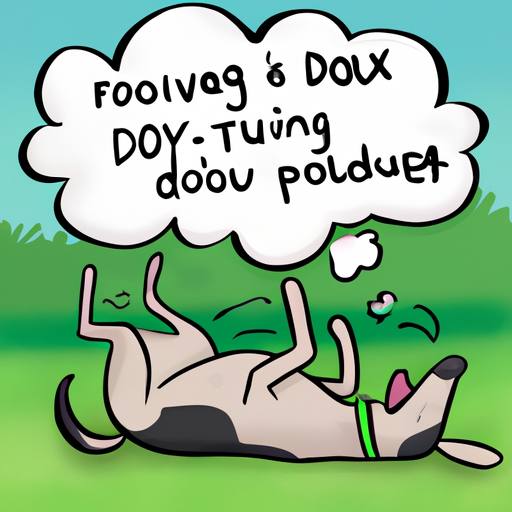Understanding Your Dog’s Behavior
Dogs, just like humans, have their unique ways of expressing joy, comfort, and satisfaction. One such behavior you might have noticed is your dog rolling around on its back. This behavior, while seemingly silly and endearing, actually serves a number of purposes other than just looking cute.
-
To scratch a hard-to-reach itch: Dogs can’t reach every part of their bodies with their paws. Rolling around on their backs can be a way for them to scratch a persistent itch.
-
To mark their territory: Dogs have scent glands in their fur. When they roll around, they spread their scent, effectively marking their territory.
-
To communicate with you: Sometimes, dogs roll onto their backs as a way of communicating with their human friends. This can be a sign of submission or a plea for attention.
Decoding the Mystery of Canine Behavior
As a caregiver, understanding the nuances of your canine companion’s behavior can be both intriguing and challenging. Here’s a simple table to help you decode some common reasons why dogs roll on their back:
| Reason | Explanation |
|---|---|
| To relieve an itch | Rolling on the back can help a dog reach spots they can’t scratch with their paws. |
| To cool down | Dogs may roll on cool grass to relieve themselves from the heat. |
| To show submission | A dog might expose their belly to show submission to another dog or to their human. |
| To get your attention | Dogs often roll on their backs to get their human’s attention, especially if it results in belly rubs! |
The Role of Instincts in Your Dog’s Behavior
Often times, a dog’s behavior is guided by their instincts. In the wild, dogs roll around on their backs to mask their scent by picking up the smells of their surroundings. This instinctual behavior can still be seen in domestic dogs.
The Importance of Observing Your Dog’s Behavior
As a pet parent, it is crucial to pay attention to your dog’s behavior. If your dog is rolling around on their back more frequently than usual, it could be a sign that they are experiencing discomfort or distress. In such cases, it would be wise to consult with a veterinarian.
How to Respond to Your Dog’s Behavior
Knowing why your dog is rolling around on their back can help you respond appropriately. If your dog is doing it for attention, giving them a little extra love might just do the trick. If they’re doing it to relieve an itch, consider checking them for fleas or allergies.
Frequently Asked Questions
Q: My dog rolls on their back a lot, should I be worried?
A: If this behavior is paired with signs of discomfort, it’s advisable to consult a vet.
Q: Can I stop my dog from rolling on their back?
A: If the behavior is non-threatening, it’s better not to suppress natural canine behavior.
Q: Does rolling on the back mean my dog is submissive?
A: Not necessarily, it could be for numerous reasons such as itchiness or seeking attention.
Q: Is it okay to rub my dog’s belly when they roll over?
A: Absolutely, most dogs love belly rubs. However, always be gentle and avoid areas your dog may be sensitive about.



